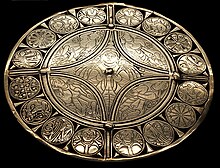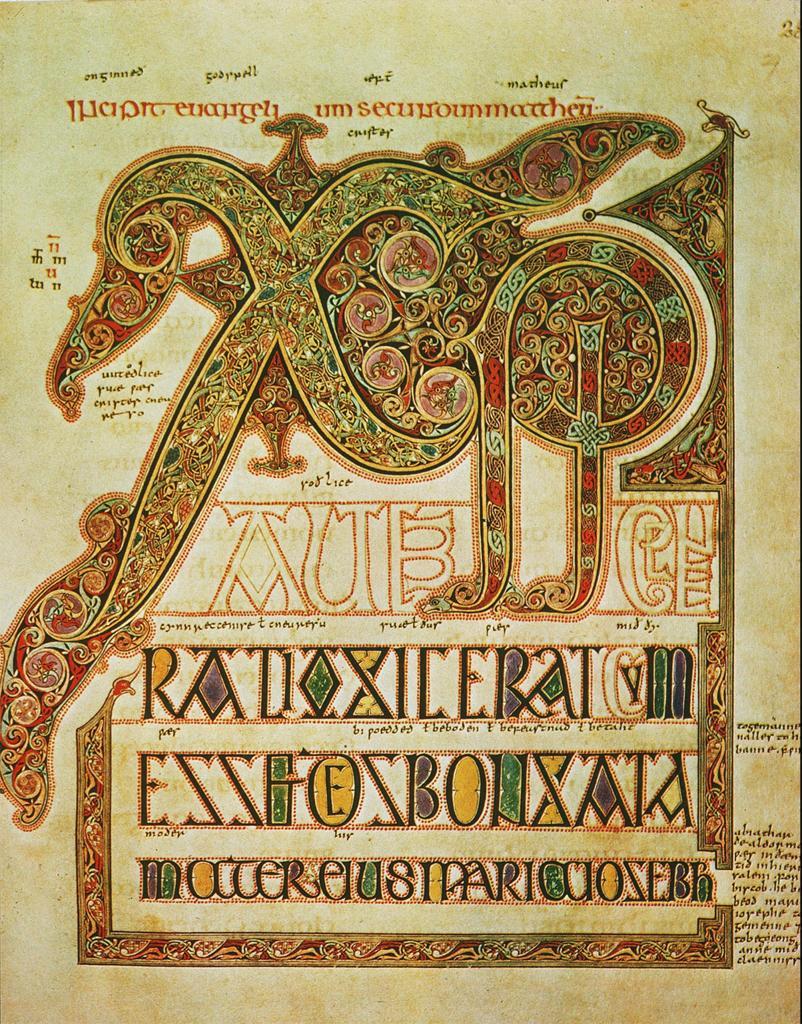| Author |
Message |
|
Christopher B Lellis
Location: Houston, Texas Joined: 01 Dec 2012
Posts: 268
|
 Posted: Fri 17 May, 2013 9:02 am Post subject: Anglo Saxon art was stunning Posted: Fri 17 May, 2013 9:02 am Post subject: Anglo Saxon art was stunning |
 |
|
No wonder the English eternally hated the French, when William the conqueror invaded Britain, "officially ending the so called dark age" all of this art stopped and the culture changed forever. He was Norman but that was essentially France in the future for them.




This was incredibly detailed and sophisticated literature and art.
This was in the so called "dark ages"
What?
|
|
  |
 |
Robin Smith

|
 Posted: Fri 17 May, 2013 10:31 am Post subject: Posted: Fri 17 May, 2013 10:31 am Post subject: |
 |
|
It's definitely beautiful, but not uniquely Anglo-Saxon. Beautiful intricate metalwork and illumination was being done all throughout Europe.
Pinning down when the Early Medieval ended is particularly hard to do. Putting it at Hastings is a particularly Anglo-centric way to frame the transition.
A furore Normannorum libera nos, Domine
|
|
   |
 |
Artis Aboltins

|
 Posted: Fri 17 May, 2013 10:43 am Post subject: Posted: Fri 17 May, 2013 10:43 am Post subject: |
 |
|
|
I agree with Robin Smith - showing a 7th century helmet and belt buckle has very little to do with what happened in 1066. Changes in material culture happened throughout Europe and it has very little to do with normans or anyone else in particular, in my opinion.
|
|
  |
 |
|
Eric W. Norenberg
|
 Posted: Fri 17 May, 2013 12:25 pm Post subject: Posted: Fri 17 May, 2013 12:25 pm Post subject: |
 |
|
Mourning the "death" of Anglo-Saxon culture and the "Frenchification" of England is probably something of a retrospective, romantic idea, just as the historians of the nineteenth (I think?) century arguably "invented" the renaissance as a clean break from the narrow minded dark and dirty "middle ages". Lots of folks see in Tolkien's works, especially his invented Rohan culture, a continuation of this theme.
Material culture in England, as in most places, was bound to evolve over time as ideas internal and external came to bear influence - the Norman conquest surely accelerated that, especially in the cosmopolitan areas. Really not entirely fair to demonize the French over it tho' because William's Norman culture was distinctive from the French heartland, although more like Paris than London, id guess. That said...
I too think the Anglo-Saxon aesthetic (metalwork, architecture, the surviving bits of ephemera) was pretty amazing, and it is intriguing to imagine where it might have gone if left to stew on its own for a few more centuries.
The English kind of paid the continent back, aesthetically speaking (in my own extremely subjective opinion!) with their refinement and adaptation of the imported styles. Anglo-Norman architecture goes places the continental romanesque never managed, just look at the nave of Durham cathedral! The innovative construction system there probably directly helped spawn the core of the Gothic style. This crossed the channel and truly first blossomed in France, but no region hung on to it and nurtured it like England. Long after the continent had pushed it into caricature and then abandoned it, Gothic art and architecture matured in England to a degree of refinement that few aesthetic vocabularies live long enough to see.
|
|
  |
 |
|
Theo Squires
|
 Posted: Fri 17 May, 2013 4:20 pm Post subject: Posted: Fri 17 May, 2013 4:20 pm Post subject: |
 |
|
|
That is very impressive artwork, certainly. However, while I may be mistaken, I believe that the dark age (is commonly thought to have) ended with Charlemagne and the creation of the Holy Roman Empire back in ~800AD. I am not sure about the situation in Albion at the time. I think is fabulous that we still have Anglo-Saxon artwork, because, as you said, it is incredible. Dark ages or not, the complexity and technical skill is astounding.
|
|
   |
 |
Daniel Wallace

Location: Pennsylvania USA Joined: 07 Aug 2011
Posts: 580
|
 Posted: Sat 18 May, 2013 9:41 am Post subject: Posted: Sat 18 May, 2013 9:41 am Post subject: |
 |
|
|
i actually put a post up sometime back asking for some examples of truly 'Saxon' art work and didn't get much back. its hard to define what exactly Saxon artwork would entail. what makes it truly different from Vandal artwork, or Norse. this is an area of study for someone working on an art history thesis - and i don't have the time to devote to such a thing.
|
|
  |
 |
David McElrea

|
 Posted: Sat 18 May, 2013 2:40 pm Post subject: Posted: Sat 18 May, 2013 2:40 pm Post subject: |
 |
|
| Quote: | | [I]ts hard to define what exactly Saxon artwork would entail. what makes it truly different from Vandal artwork, or Norse... |
This is an astute question/observation. I would add Irish and Pictish to Norwegian and Vendel, a well. Anglo-Saxon artwork didn't develop in a vacuum. It was shaped by (and also helped to shape) the art of the cultures that surrounded it. Much of what people consider Celtic is actually a synthesis between earlier La Tene art forms and later Saxon forms-- and the reverse is also true. Either way, the artistry of Dark Age Britain really was marvelous.
|
|
  |
 |
|
|

